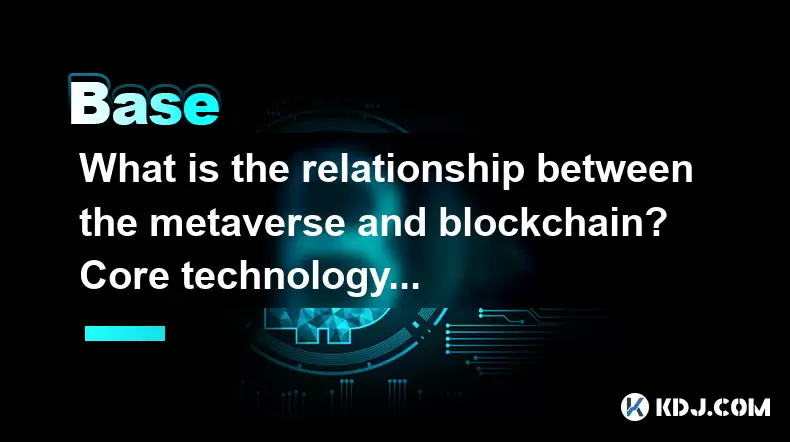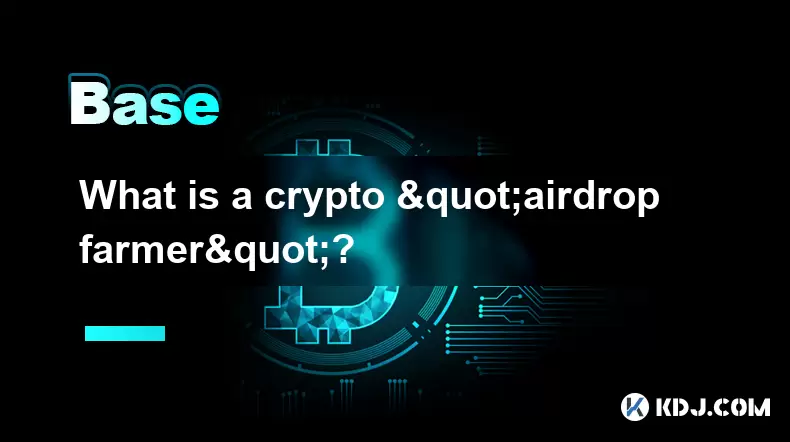-
 Bitcoin
Bitcoin $117900
0.31% -
 Ethereum
Ethereum $3766
0.28% -
 XRP
XRP $3.176
-0.31% -
 Tether USDt
Tether USDt $1.000
0.00% -
 BNB
BNB $795.6
1.51% -
 Solana
Solana $186.8
-1.09% -
 USDC
USDC $0.9999
-0.01% -
 Dogecoin
Dogecoin $0.2353
-1.33% -
 TRON
TRON $0.3226
1.49% -
 Cardano
Cardano $0.8172
-1.08% -
 Sui
Sui $4.178
3.06% -
 Hyperliquid
Hyperliquid $43.05
-3.39% -
 Stellar
Stellar $0.4367
-0.57% -
 Chainlink
Chainlink $18.62
1.47% -
 Hedera
Hedera $0.2828
6.63% -
 Bitcoin Cash
Bitcoin Cash $584.7
5.65% -
 Avalanche
Avalanche $24.81
2.53% -
 Litecoin
Litecoin $112.8
-0.88% -
 UNUS SED LEO
UNUS SED LEO $8.975
-0.08% -
 Shiba Inu
Shiba Inu $0.00001395
-1.07% -
 Toncoin
Toncoin $3.285
-1.05% -
 Ethena USDe
Ethena USDe $1.001
0.01% -
 Polkadot
Polkadot $4.123
0.76% -
 Uniswap
Uniswap $10.49
-0.18% -
 Monero
Monero $326.5
0.14% -
 Dai
Dai $0.9999
-0.02% -
 Bitget Token
Bitget Token $4.576
0.34% -
 Pepe
Pepe $0.00001247
-1.55% -
 Cronos
Cronos $0.1400
3.77% -
 Aave
Aave $295.1
-0.73%
What is the relationship between the metaverse and blockchain? Core technology and application scenarios
Blockchain enables true digital ownership and interoperability in the metaverse through NFTs, smart contracts, and decentralized systems.
Jun 10, 2025 at 09:00 pm

Understanding the Intersection of Metaverse and Blockchain
The metaverse is often described as a collective virtual shared space, created by the convergence of virtually enhanced physical reality and persistent virtual spaces. It includes the sum of all virtual worlds, augmented reality, and the internet. Meanwhile, blockchain technology is a decentralized digital ledger that records transactions across many computers in such a way that the registered transactions cannot be altered retroactively. The relationship between these two concepts is becoming increasingly significant as both evolve.
One of the most compelling reasons for integrating blockchain into the metaverse is the need for decentralized ownership and control. In traditional online platforms, data and assets are controlled by centralized entities. However, in a blockchain-powered metaverse, users can truly own their digital identities, avatars, and virtual properties through non-fungible tokens (NFTs) and smart contracts.
Core Technologies Behind the Integration
To understand how blockchain supports the metaverse, it's essential to explore the core technologies involved. These include:
- Smart Contracts: Self-executing contracts with the terms directly written into code. They allow for automated, trustless interactions within the metaverse.
- Non-Fungible Tokens (NFTs): Unique digital assets that represent ownership of virtual items like land, wearables, or art in the metaverse.
- Decentralized Identity Systems: Blockchain enables users to manage their own digital identities without relying on third-party services.
- Decentralized Storage Solutions: Platforms like IPFS and Filecoin provide distributed storage systems that ensure data persistence and availability in a decentralized environment.
These technologies together form the backbone of a trustless and transparent ecosystem, which is crucial for building user confidence in the metaverse.
Application Scenarios of Blockchain in the Metaverse
Blockchain technology opens up numerous application scenarios in the metaverse, including but not limited to:
- Virtual Real Estate Transactions: Users can buy, sell, or rent virtual land using cryptocurrencies, with ownership recorded on the blockchain.
- Digital Collectibles and Wearables: NFTs enable true ownership of digital fashion items, accessories, and collectibles.
- Gaming Economies: Players can earn, trade, and spend in-game currencies and items across different platforms thanks to interoperable blockchain systems.
- Content Creation and Royalties: Creators can monetize their work directly, receiving royalties every time their content is used or resold.
Each of these applications leverages blockchain’s ability to provide secure, immutable records of ownership and transaction history, making them resistant to fraud and manipulation.
How Blockchain Enables Interoperability in the Metaverse
Interoperability is a key challenge in the development of the metaverse. Different platforms and ecosystems must be able to communicate and share data seamlessly. Blockchain facilitates this interoperability by offering standardized protocols and tokenization mechanisms.
For example, a user could purchase a digital outfit on one platform using an NFT and then use that same outfit avatar across multiple metaverse environments. This level of cross-platform functionality is made possible by token standards like ERC-721 and ERC-1155, which define how NFTs behave and interact.
Additionally, cross-chain bridges allow assets and data to move between different blockchain networks, further enhancing the seamless experience expected in the metaverse. These tools help maintain a unified economy and identity system across diverse virtual environments.
Security and Trust in a Blockchain-Powered Metaverse
Security remains a top concern for any digital environment, especially one as expansive and interconnected as the metaverse. Blockchain enhances security by decentralizing control and encrypting transactions. Every action taken in the metaverse—whether buying land, trading items, or interacting with others—can be recorded on an immutable ledger.
This transparency reduces the risk of fraud and unauthorized access. Moreover, smart contracts eliminate the need for intermediaries, reducing points of failure and increasing efficiency. Users also benefit from self-sovereign identity solutions, where they control their personal information rather than surrendering it to centralized authorities.
In high-stakes environments like virtual real estate markets or competitive gaming, tamper-proof transaction logs are invaluable. They ensure fairness, accountability, and long-term trust among participants.
Frequently Asked Questions
- Can the metaverse exist without blockchain?
Yes, but it would lack features like true digital ownership, decentralized governance, and secure peer-to-peer transactions that blockchain provides. - What role do cryptocurrencies play in the metaverse?
Cryptocurrencies serve as the native financial layer of the metaverse, enabling fast, secure, and borderless transactions without intermediaries. - Are there risks associated with using blockchain in the metaverse?
Risks include scalability issues, regulatory uncertainty, and potential vulnerabilities in smart contract code, which could lead to exploits or loss of assets. - How does blockchain affect user privacy in the metaverse?
Blockchain can enhance privacy through pseudonymous transactions and decentralized identity systems, though public ledgers may still pose data exposure risks if not properly managed.
Disclaimer:info@kdj.com
The information provided is not trading advice. kdj.com does not assume any responsibility for any investments made based on the information provided in this article. Cryptocurrencies are highly volatile and it is highly recommended that you invest with caution after thorough research!
If you believe that the content used on this website infringes your copyright, please contact us immediately (info@kdj.com) and we will delete it promptly.
- Cryptos to Watch in 2025: Punisher Coin, Chainlink, and the Altcoin Arena
- 2025-07-27 18:30:13
- Bitcoin, Altcoins, Rebound: Navigating the Crypto Comeback Trail
- 2025-07-27 18:30:13
- Ethereum, Bitcoin, and Altcoins: A Shift in Crypto Tides?
- 2025-07-27 19:10:13
- Windtree Therapeutics' Bold BNB Strategy: A $520 Million Crypto Play
- 2025-07-27 19:10:13
- Solana, Staking, and Unilabs: What's the Buzz in the Crypto Space?
- 2025-07-27 16:50:13
- VeChain, HBAR, Remittix: Navigating the Crypto Landscape in 2025
- 2025-07-27 17:10:12
Related knowledge

What is the difference between CeFi and DeFi?
Jul 22,2025 at 12:28am
Understanding CeFi and DeFiIn the world of cryptocurrency, CeFi (Centralized Finance) and DeFi (Decentralized Finance) represent two distinct financia...

How to qualify for potential crypto airdrops?
Jul 23,2025 at 06:49am
Understanding What Crypto Airdrops AreCrypto airdrops refer to the distribution of free tokens or coins to a large number of wallet addresses, often u...

What is a crypto "airdrop farmer"?
Jul 24,2025 at 10:22pm
Understanding the Role of a Crypto 'Airdrop Farmer'A crypto 'airdrop farmer' refers to an individual who actively participates in cryptocurrency airdr...

What is the difference between a sidechain and a Layer 2?
Jul 20,2025 at 11:35pm
Understanding the Concept of SidechainsA sidechain is a separate blockchain that runs parallel to the main blockchain, typically the mainnet of a cryp...

What is the Inter-Blockchain Communication Protocol (IBC)?
Jul 19,2025 at 10:43am
Understanding the Inter-Blockchain Communication Protocol (IBC)The Inter-Blockchain Communication Protocol (IBC) is a cross-chain communication protoc...

How does sharding improve scalability?
Jul 20,2025 at 01:21am
Understanding Sharding in BlockchainSharding is a database partitioning technique that is increasingly being adopted in blockchain technology to enhan...

What is the difference between CeFi and DeFi?
Jul 22,2025 at 12:28am
Understanding CeFi and DeFiIn the world of cryptocurrency, CeFi (Centralized Finance) and DeFi (Decentralized Finance) represent two distinct financia...

How to qualify for potential crypto airdrops?
Jul 23,2025 at 06:49am
Understanding What Crypto Airdrops AreCrypto airdrops refer to the distribution of free tokens or coins to a large number of wallet addresses, often u...

What is a crypto "airdrop farmer"?
Jul 24,2025 at 10:22pm
Understanding the Role of a Crypto 'Airdrop Farmer'A crypto 'airdrop farmer' refers to an individual who actively participates in cryptocurrency airdr...

What is the difference between a sidechain and a Layer 2?
Jul 20,2025 at 11:35pm
Understanding the Concept of SidechainsA sidechain is a separate blockchain that runs parallel to the main blockchain, typically the mainnet of a cryp...

What is the Inter-Blockchain Communication Protocol (IBC)?
Jul 19,2025 at 10:43am
Understanding the Inter-Blockchain Communication Protocol (IBC)The Inter-Blockchain Communication Protocol (IBC) is a cross-chain communication protoc...

How does sharding improve scalability?
Jul 20,2025 at 01:21am
Understanding Sharding in BlockchainSharding is a database partitioning technique that is increasingly being adopted in blockchain technology to enhan...
See all articles

























































































